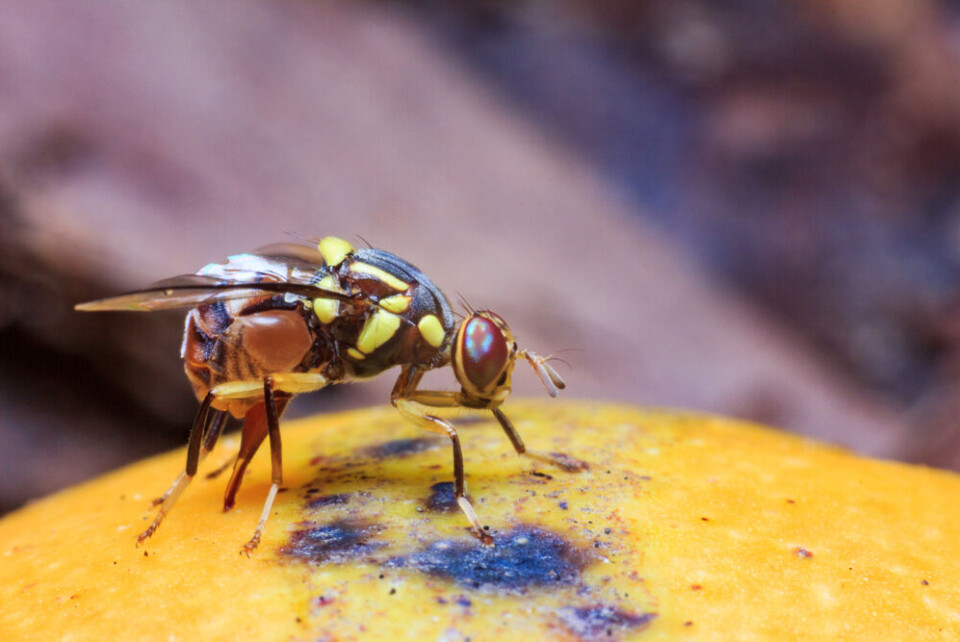-
French home energy bills to rise in 2026
Household electricity and gas bills will increase by around €50 per year
-
Social charges on UK government pensions: France residents report progress
Issue now drawing attention at the highest levels
-
Good news for many micro-entrepreneurs in France: plans to lower VAT threshold rejected by Senate
Vote reverses proposal to lower tax exemption thresholds for self-employed workers
‘Highly damaging’ fruit-eating fly at risk of spreading in France
Damage could range from 20-100% of harvests, experts have warned

A “highly damaging” fruit fly from Asia is at risk of coming to France and could “ravage” fruit and vegetable production, researchers at France’s food safety authority have warned.
A new report on the Oriental fruit fly, or Bactrocera dorsalis, has found that the “threat is real and must be taken seriously”, said Christine Tayeh, coordinator at the Agence Nationale de Sécurité Sanitaire de l'Alimentation, de l'environnement et du Travail (ANSES), .
Mouche orientale des fruits, un ravageur pour de nombreux fruits et légumes
— Anses (@Anses_fr)
The main issue with the fly is that it does not discriminate. It eats fruit and vegetables alike - including mangoes, tomatoes, courgettes, and avocados. In fact, 500 species are at risk.
“It is not yet possible to quantify the impact of the introduction of this fly,” said Ms Tayeh. “Damage could range from 20% to 100% of harvests, depending on the crop. We are not here to create disaster scenarios, but to prevent the fly from becoming established.”
Originally from Southeast Asia, the insect began to spread further in the 2000s. They lay eggs under the fruit or vegetable’s skin, and the larvae eat the pulp, destroying it from within.
The insect is common in Asia and Africa, but has now arrived in Italy, making its wider spread to France much more likely.
Five of the insects were caught in a trap in the Provence-Alpes-Côte d’Azur region in 2021, after some were also found in Paris and Occitanie in 2019 for the first time.
It is classed as a harmful pest by the European Union, and one of only 20 insects on the "regulated quarantine organisms" list. Also on the list is the infamous Xylella fastidiosa, which has ravaged Italian olive trees and has since spread to the Cote d’Azur in France.
This fruit fly, Bactrocera dorsalis, is a cousin of the Bactrocera oleae, which is already hated by olive growers, as it attacks olives and affects the quality of harvests.
Recommendations to avoid the spread
ANSES is advising individuals to avoid transporting fruit and vegetables when travelling.
The agency has also issued several recommendations to prevent the fly’s spread, both for companies and individuals.
These include:
- A Plan national d'intervention sanitaire d'urgence (national emergency health response plan), including ensuring existing rules on importing fruit and vegetables are followed
- Stepping up vigilance for people entering the country, especially with respect to imported goods and farming areas around the Mediterranean
- Using measures to reduce the pest, including traps and insecticides
- All professionals who work in contact with imported fruit and vegetables (transport, logistics, shops, etc.) must be extra vigilant to prevent this species from becoming established in France
Large-scale producers are advised to:
- Destroy old produce by burning or grinding it
- Keep produce in a plastic bag for 15 days before composting, or avoid composting altogether
- Avoid letting produce become over-ripe before harvesting
- Use farming techniques that prevent produce falling to the ground
- Cover plants with insect-proof nets
- Close rubbish bins and bags with produce inside and empty bins frequently
- Install insect traps at points where produce is loaded or unloaded
People who spot Bactrocera dorsalis are asked to .
Read also
Destructive oriental fruit fly found in South of France for first time
Why are there so many flies in southwest France now?























